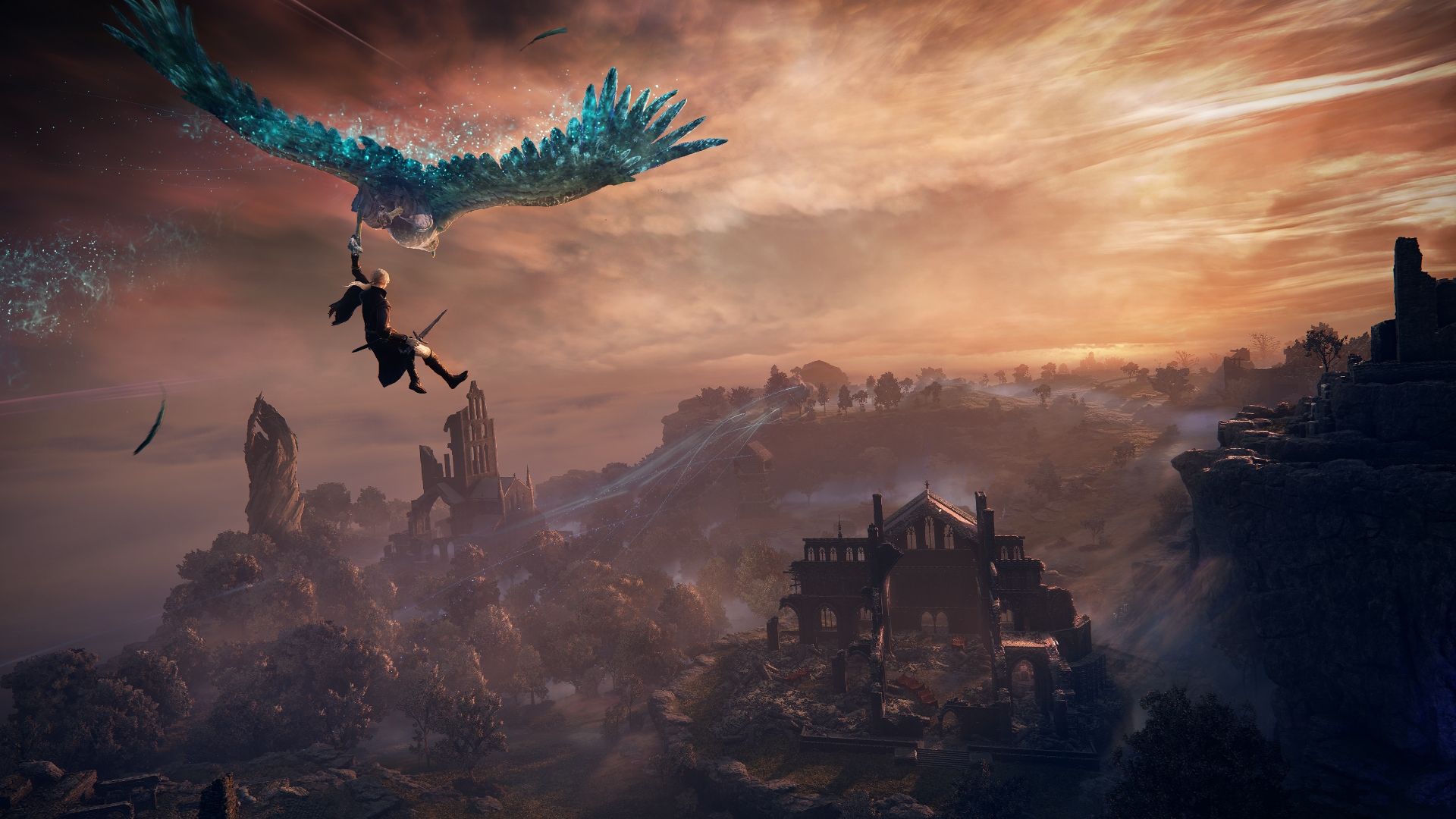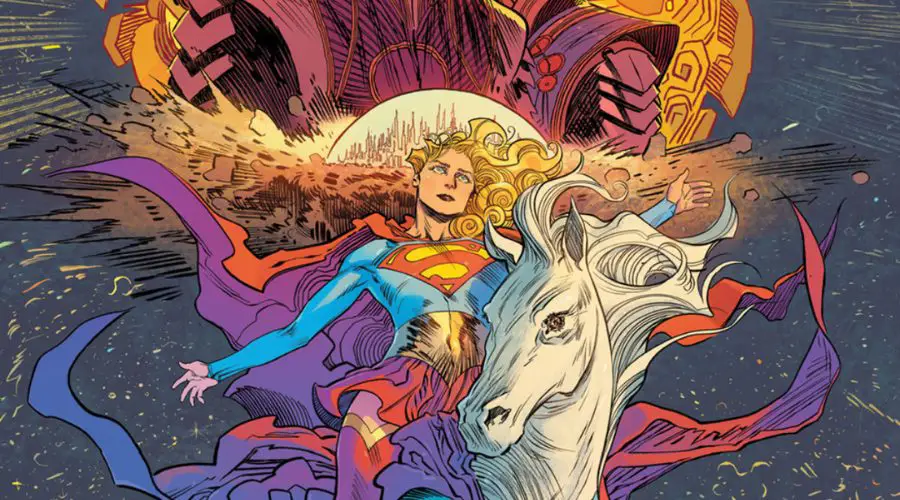I played the network test for Elden Ring Nightreign, and I have many thoughts. There is an incredible game in the bones of what I played, but the execution isn’t there – yet. As someone who has clamored for a way to replay certain boss encounters in previous Souls games without replaying those games entirely, this could be the best avenue. Assuming that is the direction they’re heading, however, the only bosses from previous Souls games that have been shown off are the Centipede Demon (Dark Souls), The Duke’s Dear Freja (Dark Souls II), and my beloved Nameless King (Dark Souls III). FromSoftware – let me fight Ludwig, The Holy Blade again, and my soul (you see what I did there?) is yours.
The simplest way to describe Elden Ring Nightreign is that it’s a combination of Hades, Fortnite, and – well – Elden Ring. It is a cooperative roguelike game where you must survive three days and two nights in a procedurally generated version of Limgrave, the opening area of Elden Ring. What my biggest challenge was with Elden Ring Nightreign wasn’t even the difficulty of the enemies but rather the game itself. It feels like a Souls game, where if you’ve previously played a Souls game, you can essentially translate your dexterity across games, but it’s different enough that your dexterity can be your enemy. The button layout is a lot different, the speed in which you move is relatively jarring, and I caught myself getting lost in the mechanics of the game rather than the game itself. All to say, if you’ve previously played Souls games, you’re in for a learning curve.
Elden Ring Nightreign is designed for quick matches – any downtime is a bad thing. A typical match can last around 30-45 minutes, or an hour plus if you’re one of those “level 1 playthrough” types. You get into a match, and you go. If you’re not killing at a proficient pace, you’ll either have looooooong nights, or it’ll be a washed run. The speed in which you move and
attack is akin to Hades, and you have to learn how to juggle your newfound agility (that is not present in a typical Souls game) and your stamina bar. Even then, you also have to account for your premade builds and their strengths and weaknesses. For the sake of the test, we got to choose between 4 builds: a mage build (Recluse), a heavy build (Guardian), a slick/dagger build (Duchess), and a balanced/sword build (Wylder). I personally stuck with the Wylder build during my time with the network test and still couldn’t get a grip on it. I know, I know, “get good,” you don’t have to tell me.
The first two days have you and your two companions (if the game is working properly, given the test environment) running through a generated area – killing everything in sight. As you traverse the land, you’ll encounter sites of grace – what’s different is you don’t have to interact with the grace site; passing by it is sufficient to activate it. This leads me to the biggest mechanic in any Souls game: dying. Anytime you die during the day, you’ll lose your runes and restart at the previous site of grace. Your companions can pick up your dropped runes, which is a huge plus if you respawn and want to find somewhere else to pillage.
You’ll receive weapons, spells, consumable items, and currency with which you can make yourself stronger. You’re rewarded in spades for killing harder foes and inversely rewarded sparingly for killing weaker foes (pretty consistent with most games, I know). The enemies are what you’d expect from the more common/less abstract areas (think Leyndell or Stormveil as opposed to the Sewers or Caelid), so they’re pretty generic but familiar enemy types. There’s strategy in focusing on your level progression and the enemy types presented to you. Is it a good idea to fight a dragon that’s roaming around you while you’re level 2? No, even if you’re pretty good at fighting dragons in Elden Ring. That’s because your time is currency in this game, and if you don’t keep that in mind, you’ll maybe shave off two-thirds of a dragon’s health, then have to go because the storm is closing in on you.
The goal in getting stronger is to become strong enough to take on the night bosses. By the time night falls, a storm (Fortnite) will enclose you, and if you stay in the storm, you’ll slowly lose HP until you either get out of the storm or die and respawn at another site of grace. Strategically, you could die so you can just jump closer to your goal or get out of a sticky area, but you also have to reconcile with any lost runes. You’ll have a waypoint to follow that’ll tell you where a night boss is at. The storm will surround this patch of land, and you’ll fight some weaker enemies until the boss reveals itself upon killing the weaker enemies.
Multiplayer in this game works much better than I anticipated. A note: in my time, I didn’t take advantage of the multiplayer password matchmaking/playing with friends aspect because a) none of my friends got an invitation to test the game and b) a few sessions I did play had this functionality disabled. However, the random people I matched with were at the same skill level as I was. Most people would choose the Duchess or the Wylder; rarely did I see the Guardian get chosen. In the multiplayer, your companions are free to roam wherever they choose, and they can add waypoints for you to venture to. During the day, it’s a big free-for-all until you have to circle into the boss arena to fight the night boss. The multiplayer is pretty uncomplicated, and in my experience, it doesn’t work in conjunction with the gameplay, but rather, it can take the heat off of you if you’re stuck on a tough enemy. Not to say that that is a bad thing; I see this being a fun time with your Souls game-loving group of friends.
Now, with the night bosses, the boss on night 1 varies, and the boss on night 2 is always the Fell Omen (or Morgott). I fought the Demi-Human Queen and Demi-Human Swordsman one time and Centipede Demon for the remainder of my night 1 encounters. Regardless of the level you reached, my biggest complaint with the game thus far is how spongy these bosses are. You can be at the highest level you can reach on day 1 (which is level 6) and see yourself wailing on these bosses a comedic amount. There were times where I was fighting the Centipede Demon where I could close my eyes and wail and still come out the other side okay. It was an artificial difficulty implemented that sucks out a lot of what I find enjoyable in the Souls game (PERSONALLY!).
Reserve the booing, but I did not make it past the Fell Omen during my time with the network test. The Fell Omen is definitely a doable boss, but grappling with the mechanics, my own limited play time (roughly 4 total hours of play), and the skill level of those I matched up with online played a role in my success here. Upon official release, I’m sure I can easily defeat the Fell Omen. From what I understand, you move onto a rest area before you fight the night lord – Gladius, Beast of Night. It’s a Cerberus-esque enemy that is supposedly also a health sponge as well.
After each run, regardless of success, you’ll be given some currency to use at the Roundtable Hold, as well as charms that can permanently buff your build in a future run. I didn’t spend a lot of time exploring what was offered at the Roundtable Hold because you have a few things that you can do while you’re there. However, in line with the roguelike genre, you have this area to recollect, purchase buffs (or maybe cosmetics in the base game?), strategize, and fix any deficiencies in your attack plan. I chose to stick with maximizing my run time, though, as I didn’t have much time to spend with the mechanics and finer pieces of the game.
In terms of my gripes at the moment, the aforementioned boss health issue is my primary one. The map also doesn’t appear extremely well, and the strategizing elements that bleed from Elden Ring that are conducive for slower and methodical gameplay don’t translate. For example, as you kill enemies and get better items, there are stats and perks a weapon can grant you. However, Elden Ring Nightreign doesn’t really reward you to sit and think on your ideal weapon set. In my experience, if I saw a weapon that fit how I wanted to play (mainly a long sword) that said, “Yeah, this is stronger than what you got,” then I snatched that up and disregarded everything else. I mean, you get a list of stats for the weapon as you approach it – I’m not reading all that! I got knights and dragons to slay!
Elden Ring Nightreign is going to be a great time with your friends once it’s out. There are still a few months until the official release, and if FromSoftware can get the mechanical aspects tuned in together and focused on the swift gameplay style they’re aiming for, there is potential for this to be a really great game. My time with the network test wasn’t perfect, but by no stretch was it a bad time. There is a lot of potential with this game, and I’m excited to see more of it in the coming months. Please, FromSoftware – the boss’s name is “Ludwig, The Holy Blade.” Put him in the game, please.






Leave a Comment